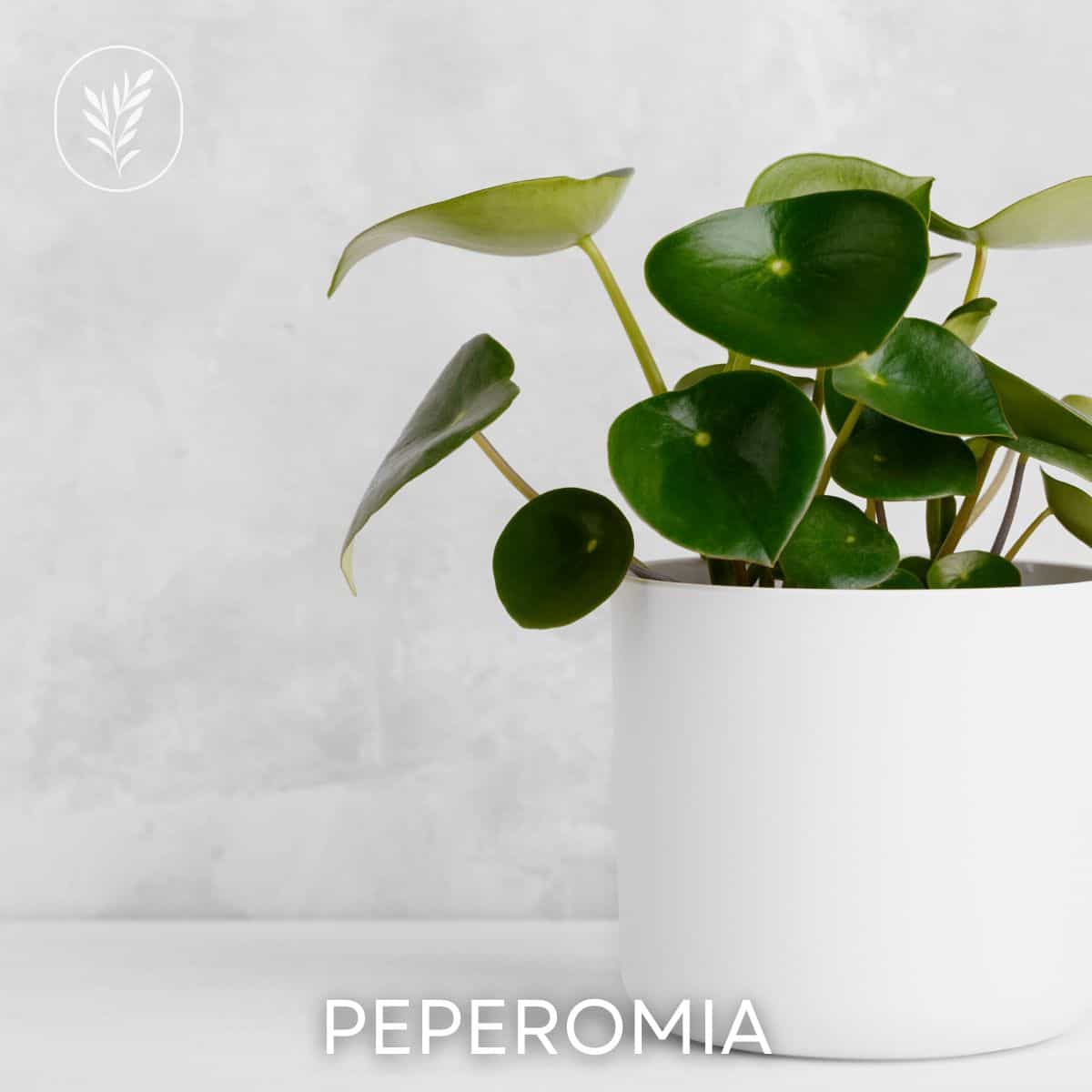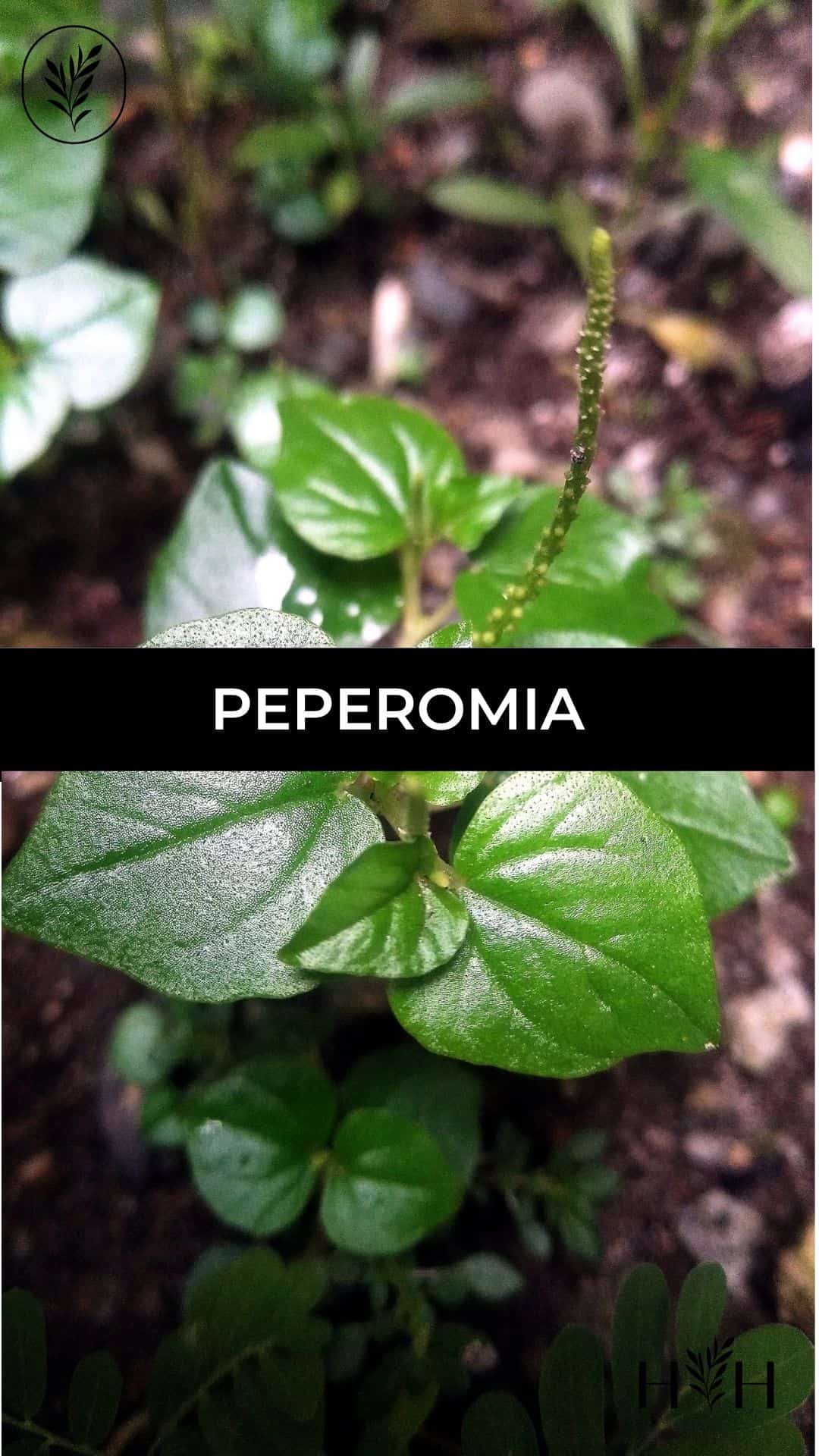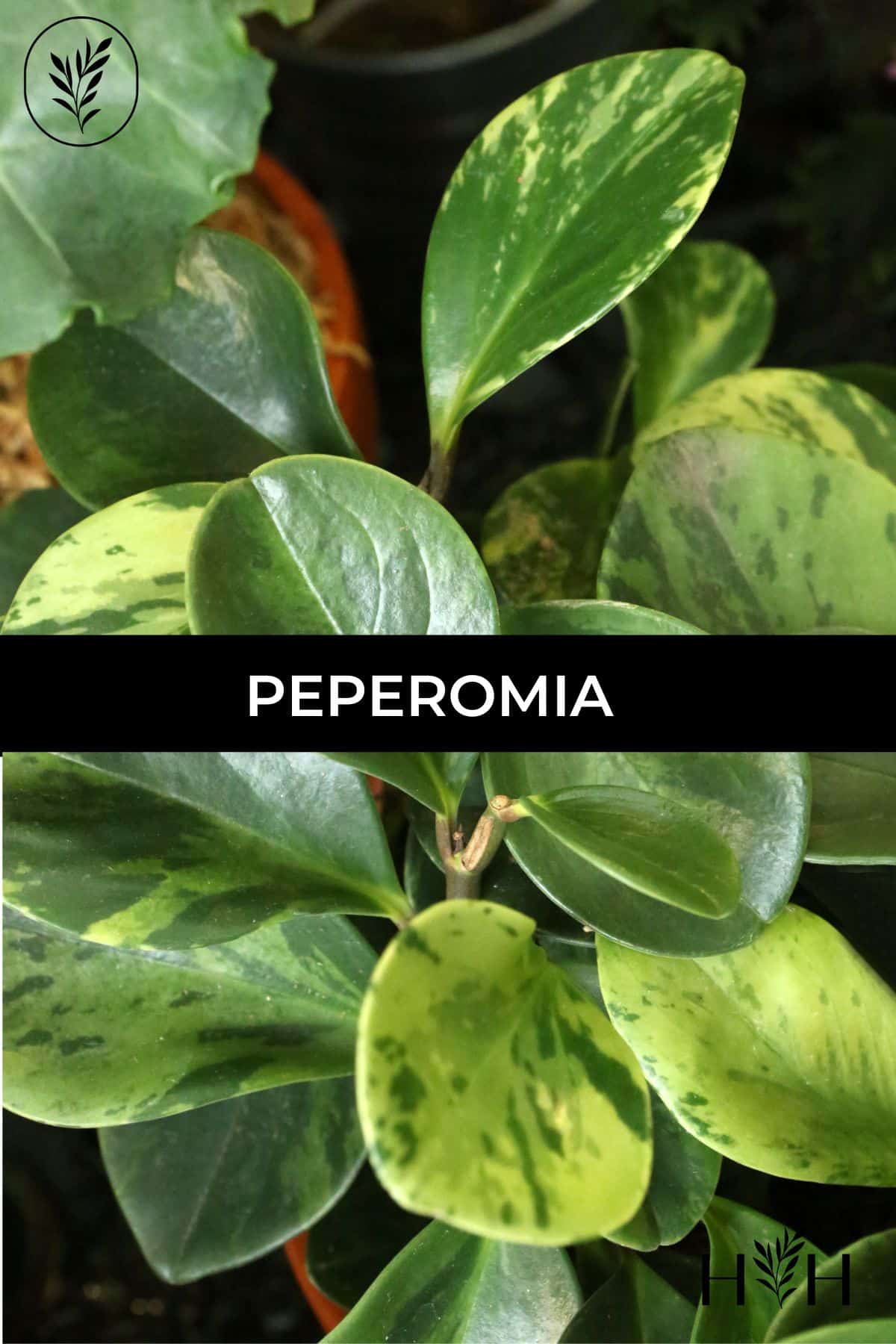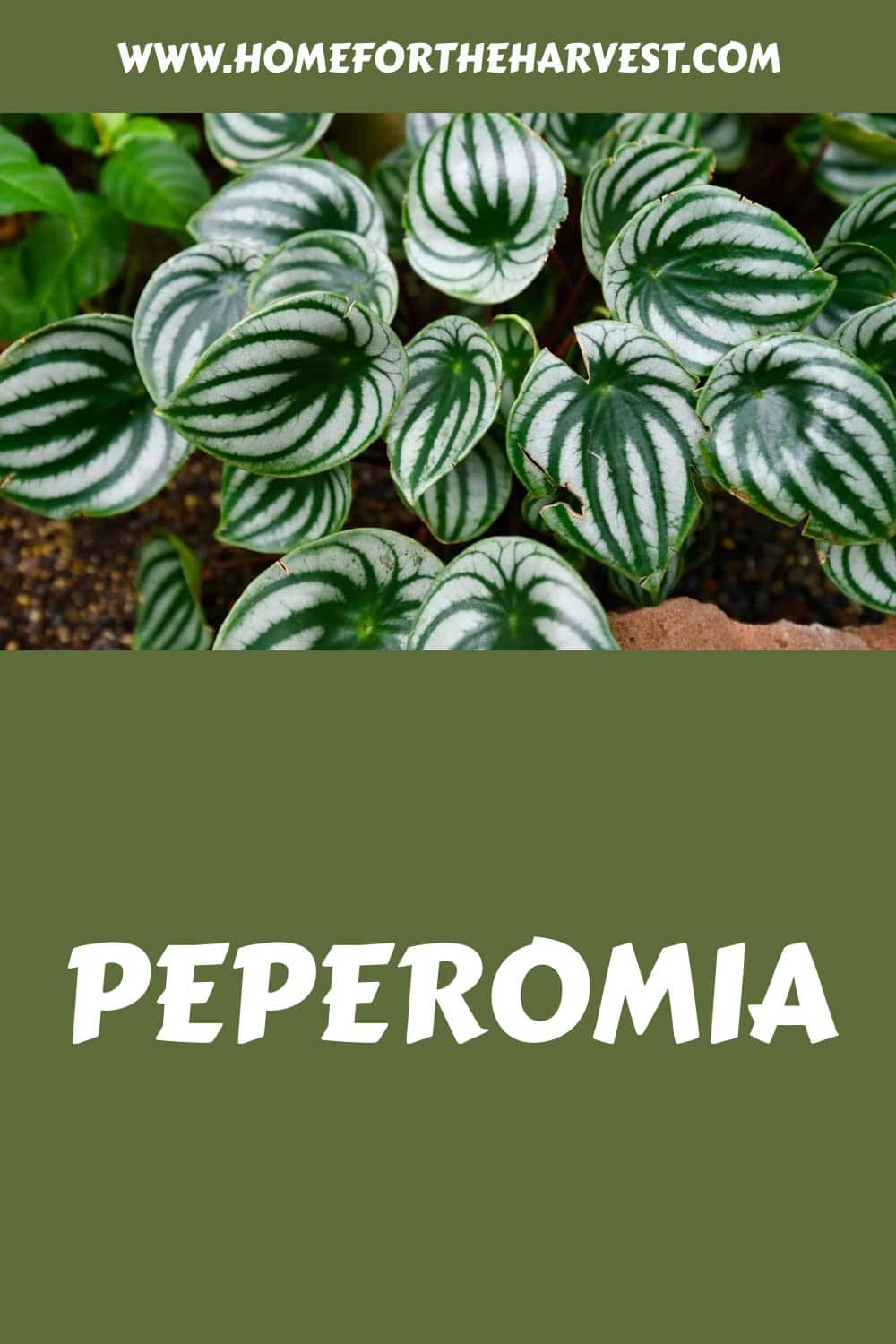Peperomia is one of the most popular houseplants – and for good reason!
Peperomia is a leafy tropical plant that makes a highly ornamental low-maintenance houseplant. There are over 1500 species of Peperomia in the wild. Peperomia plants generally have fleshy leaves with small pointed flowers. These cute plants are not only wildly popular but also very easy to grow (even for beginner houseplant parents).
Let’s talk about Peperomia, including some key general information, care tips, and common questions people have about growing Peperomia.
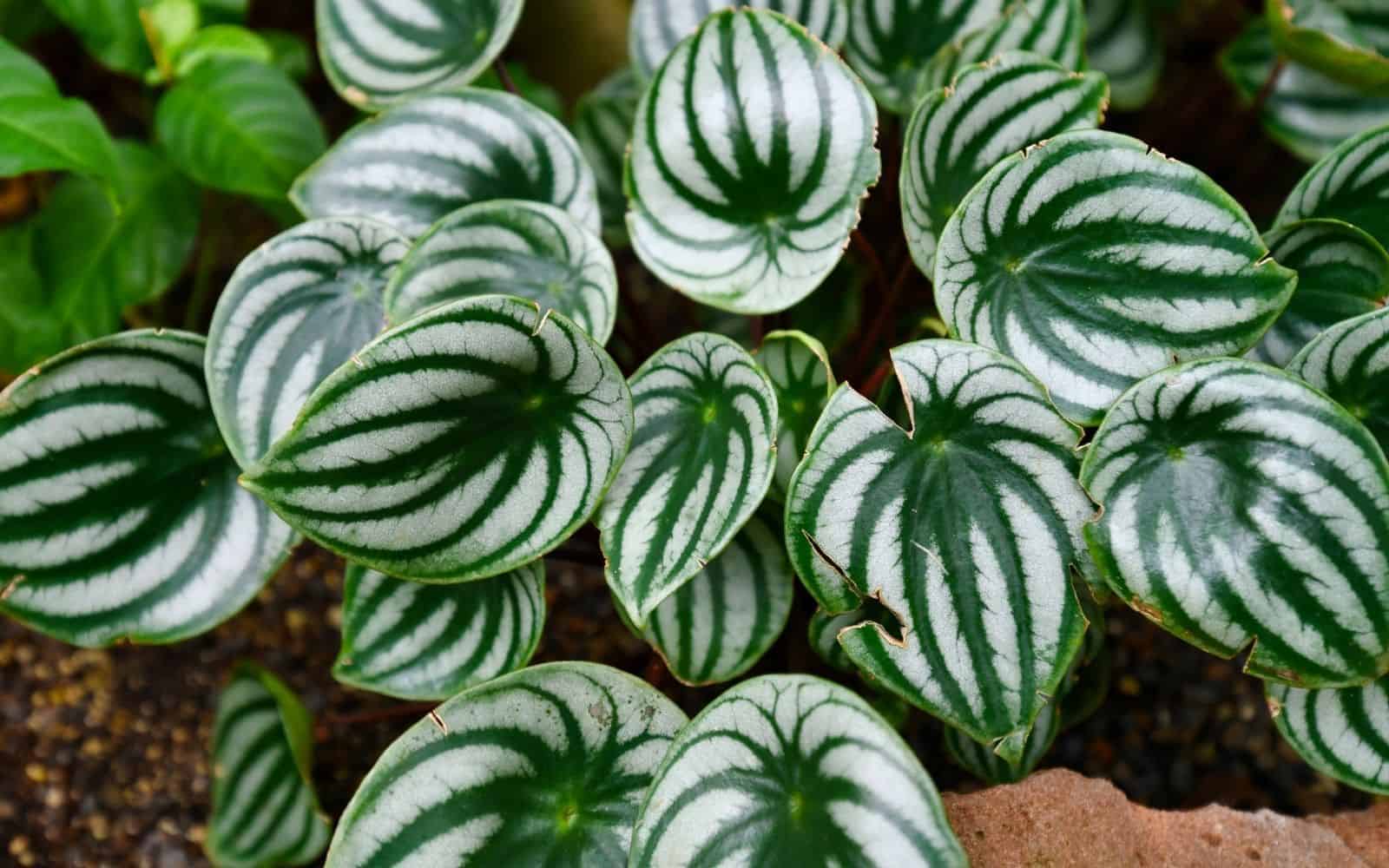
Peperomia plant basics
Peperomia plant species are mostly native to tropical areas of the Americas. You most commonly find them in places in Central America and northern South America, such as in Florida, Mexico, islands in the Caribbean, and the Amazon rainforest. They are also found in other tropical and subtropical regions throughout the world, such as in Africa, although there is only a limited number of species found there.
Peperomia tend to grow under trees where it is warm but somewhat shady. Common names for this plant include Radiator Plant and Desert Rivet Plant. Individual species have different common names (see below).
Peperomia is most commonly used as a houseplant. It’s more common to grow them inside because their foliage is both lovely and decorative. They are also quite easy to maintain.
Here are some of the most popular types of Peperomia to consider:
- Peperomia obtusifolia – Also called the Baby Rubber Plant or the Dwarf Pepper, and it’s a bushy plant with round leaves and small greenish-white flowers.
- Peperomia argyreia – This one is also called the Watermelon Plant, or Watermelon Peperomia, and it’s known for its peltate leaves (which means the stems are attached centrally on the leaf, and not on a side of it) that are oval and appear as a mix of green and white or silver stripes.
- Peperomia rotundifolia – Also called Creeping Buttons, this is a trailing plant with small, round leaves that often grows to crawl over surrounding rocks and trees.
- Peperomia pellucida – It has the nickname of Rat’s Ear and has shiny, heart-shaped leaves with tiny seeds growing along spikes. It also releases a mustard-like odor when it’s crushed.
- Peperomia caperata – Also called the Ripple Peperomia, this is probably one of the most popular types of Peperomia and is found in Brazil. It’s leaves are more heart-shaped than round, are often wrinkled, and feature darker colors like dark green, red, and purple.
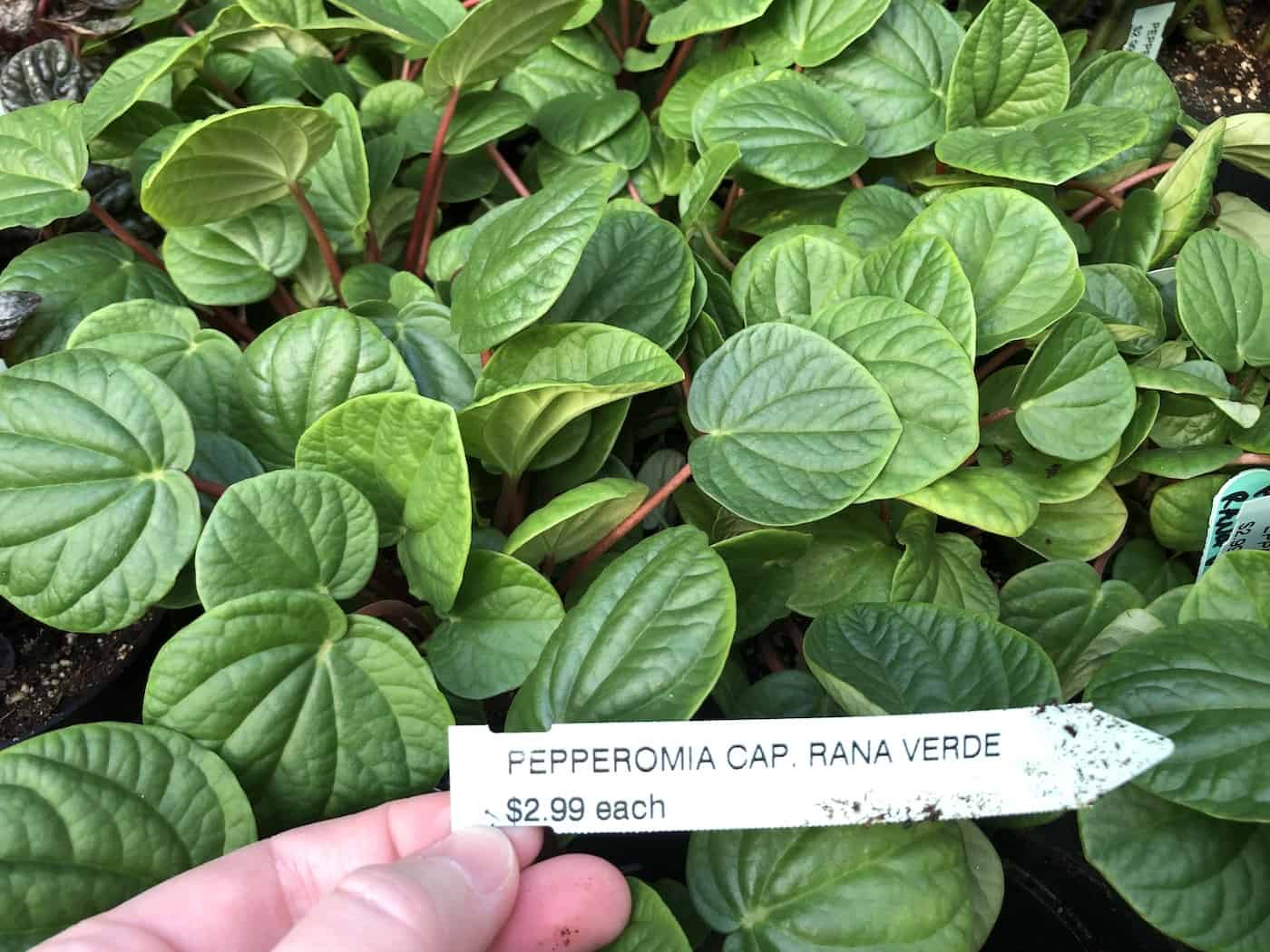
Here are some popular specialty-named cultivars of Peperomia:
- Peperomia ‘Ginny’ – This very popular cultivar has a striking green and white variegated leaves with a thin pink edge.
- Peperomia ‘Hope’ – This specific plant is a hybrid mix of Peperomia quadrifolia and Peperomia deppeana. It is seen as an ideal houseplant and has incredibly round leaves that drape out on long stems in all directions.
- Peperomia ‘Frost’ – This cultivar has silvery white striped leaves.
There is also some symbolism that is tied to Peperomia as well. Peperomia ‘Hope’ is thought to bring wealth and prosperity. In Brazil, Peperomia is sometimes viewed as a symbol of luck and can be given as a gift.
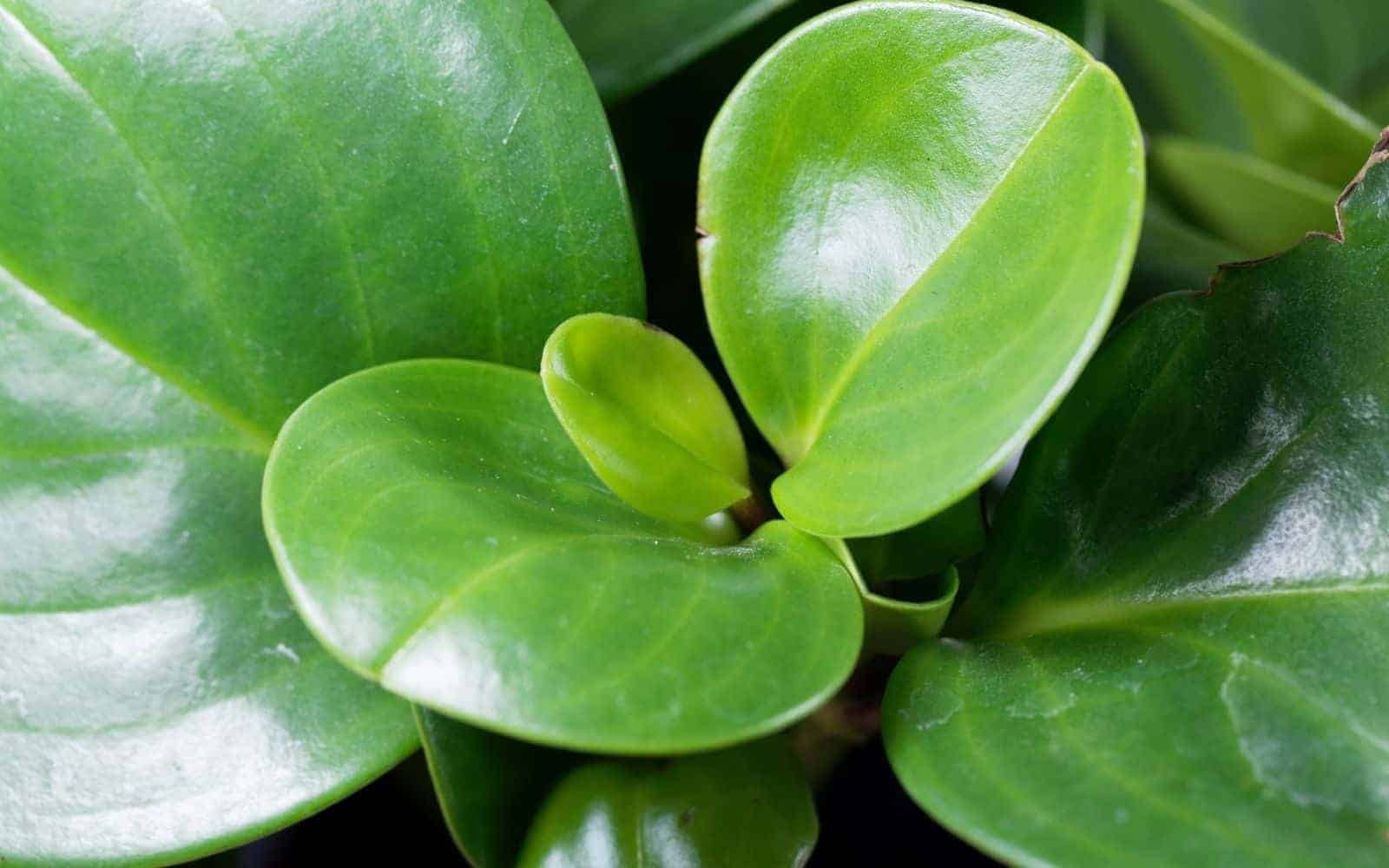
Growing Peperomia plants
In this section, we’ll be covering some good things to know about Peperomia, from things like its physical size and characteristics to its temperament.
As there are many different varieties found in this plant species, Peperomia can grow in so many different shapes and colors. When it comes to their size, these plants stay on the small side overall. Most of the varieties are rather compact and typically grow to be around 1 foot in both height and width. They also grow slowly, and their foliage is thick and vibrant. The size makes it an ideal plant for growing in indoor and smaller spaces, like windowsills and balconies. And its lovely, simple appearance is one of the reasons that it makes such a popular houseplant.
Peperomia leaves are usually quite small, most often rounded, and a little on the thick side too. They are also often a bright green color, although that can change in different varieties such as the watermelon begonia. In addition, the flowers on these plants don’t always look like flowers! This is probably because they can look just like plant stems with their tall, straight, and spiky shape, and also because of their color. Peperomia flowers can be white, green, a faint yellow, or even shades of brown.
All kinds of Peperomia are known for their lack of dependence on outside help to survive. They do well in a great range of growing conditions, don’t need as much maintenance as other plants do (especially indoor ones), and can thrive easily enough on their own. Yet even though Peperomia might seem like quite an independent plant, it’s still important to know how you can appropriately take care of it if you raise one in your home. Even hardy plants have care routines that need to be followed.
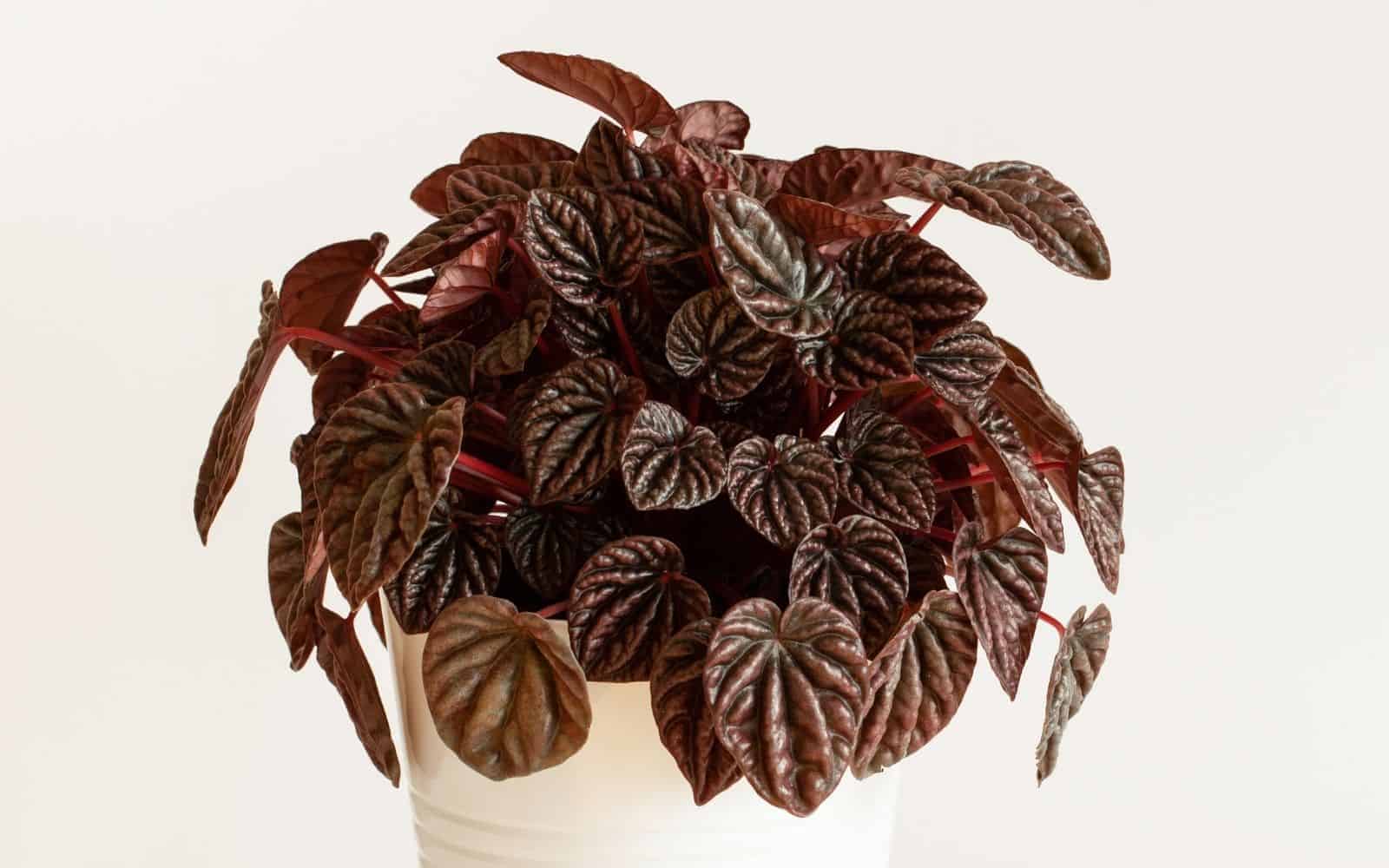
How to care for Peperomia plants
Peperomia Plants are among the easiest houseplants to care for. That said, they can be harmed by overwatering and thrive best in certain conditions. Here are the basics about caring for Peperomia plants.
Planting peperomia
The best time to plant them is sometime in the spring, or simply early in the growing season (whether planting indoors or outdoors). As for where to plant them, the most important thing to take into account is the amount of light that they need. Peperomia likes at least some shade and will grow the best if it is not placed in direct sunlight. They do need a lot of light, however, to generate their bright colors.
If you plan on making your Peperomia a houseplant, the best windows to place them would be near an east or west window that is unshaded or a south one that is shaded. If you see any evidence of leaf scorching, you will know your plant is getting too much direct sunlight. On the other hand, one way to tell if your Peperomia isn’t getting enough direct light is that it will become leggy.
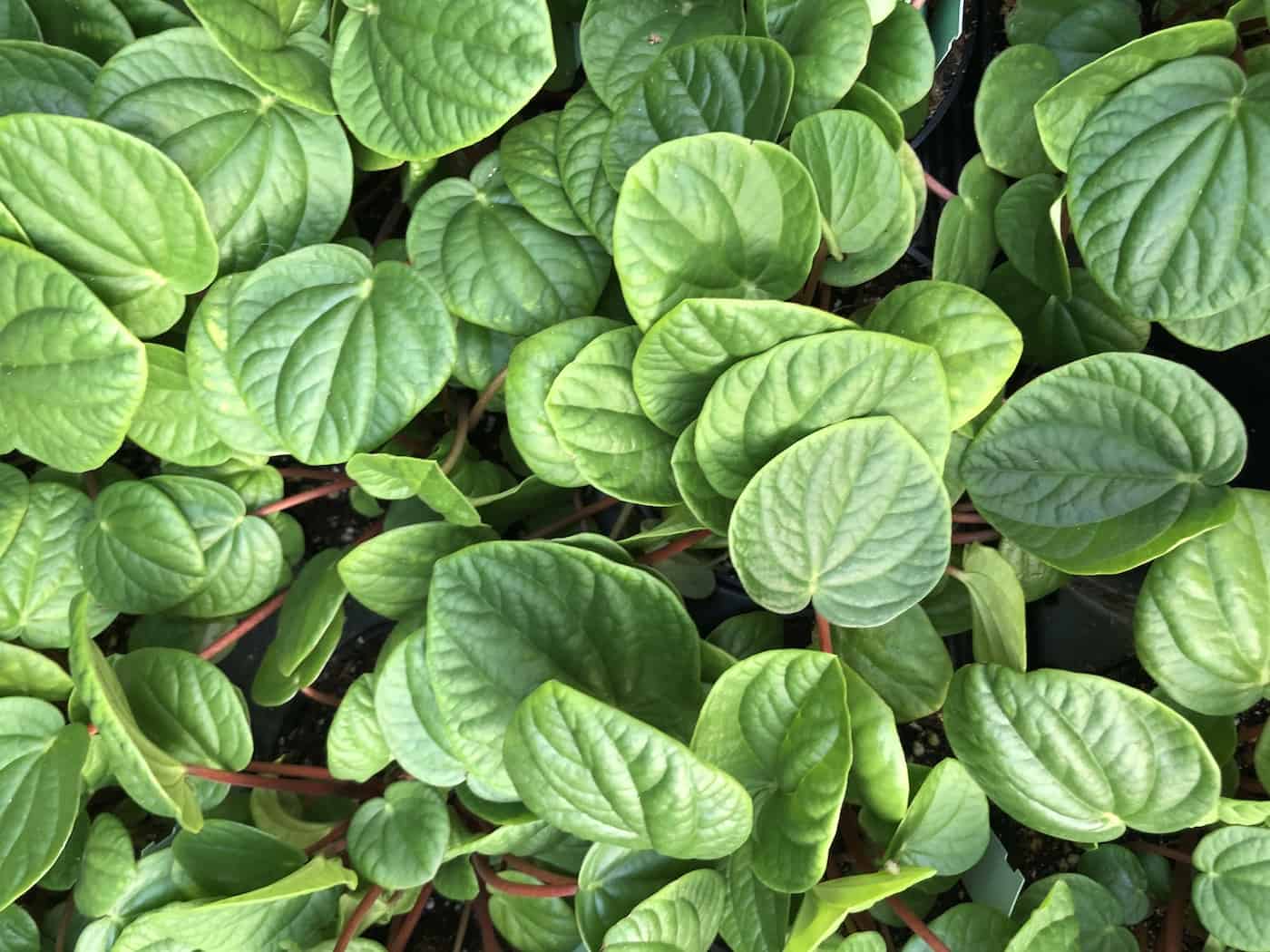
Temperature and humidity for Peperomia plants
Peperomia prefers soil that is loamy, well-drained, and of medium moisture. It also doesn’t like compact soil so make sure you plant it in soil that is well-aerated. As for the soil pH, the range best suited for Peperomia is between neutral and borderline acidic, from 6 to 6.6.
The hardiness zones that this plant will have the easiest time surviving in are from 10 to 12. This is more applicable when it is planted outside because when grown inside, this plant will find it easier to adapt to different living conditions. They will typically do well in room temperatures between 55°F and 80° F.
Because it has leaves with some succulent characteristics, it is easier for Peperomia to tolerate less watering and lower humidity. Remember that this plant species is used in rainforests and higher, tropical levels of humidity. If you want to help raise the humidity of your plant, one thing you can do is mist the leaves with just a bit of water (although a humidifier is a better long-term option).
Watering Peperomia indoor plants
Peperomia don’t need to be watered that much. These are houseplants that (kind of) thrive on neglect. Overwatering will cause the leaves to droop and could eventually kill the plant. Other signs of overwatering are rotting stalks, waterlogged soil, and leaves that are yellowing.
If the soil gets dry, or at least when the top few inches of it are completely dry, that is when you should water it thoroughly. If the plant is in a place (like an east or west window) where it might be getting more sunlight, plan on watering them at least once every two weeks or maybe even a little more. The soil should be your guide when it comes to how often you water your Peperomia, not the calendar.
You probably won’t need to water them as much in the late fall and winter, too, as that is when the plant is not growing as much. Peperomia is quite sensitive to overwatering, and this can be a severe weakness for them. If the overwatering gets bad, it can form raised, scab-like protrusions on the leaves.
Pruning Peperomia
You typically won’t need to prune Peperomia often, but if you do use some sharp scissors or shears. Some reasons you might need to prune is that the plant gets taller than a foot, or you need to take off some dead growth. You probably want to stay away from pruning it too heavily, though, as this could cause heavy damage to your plant.
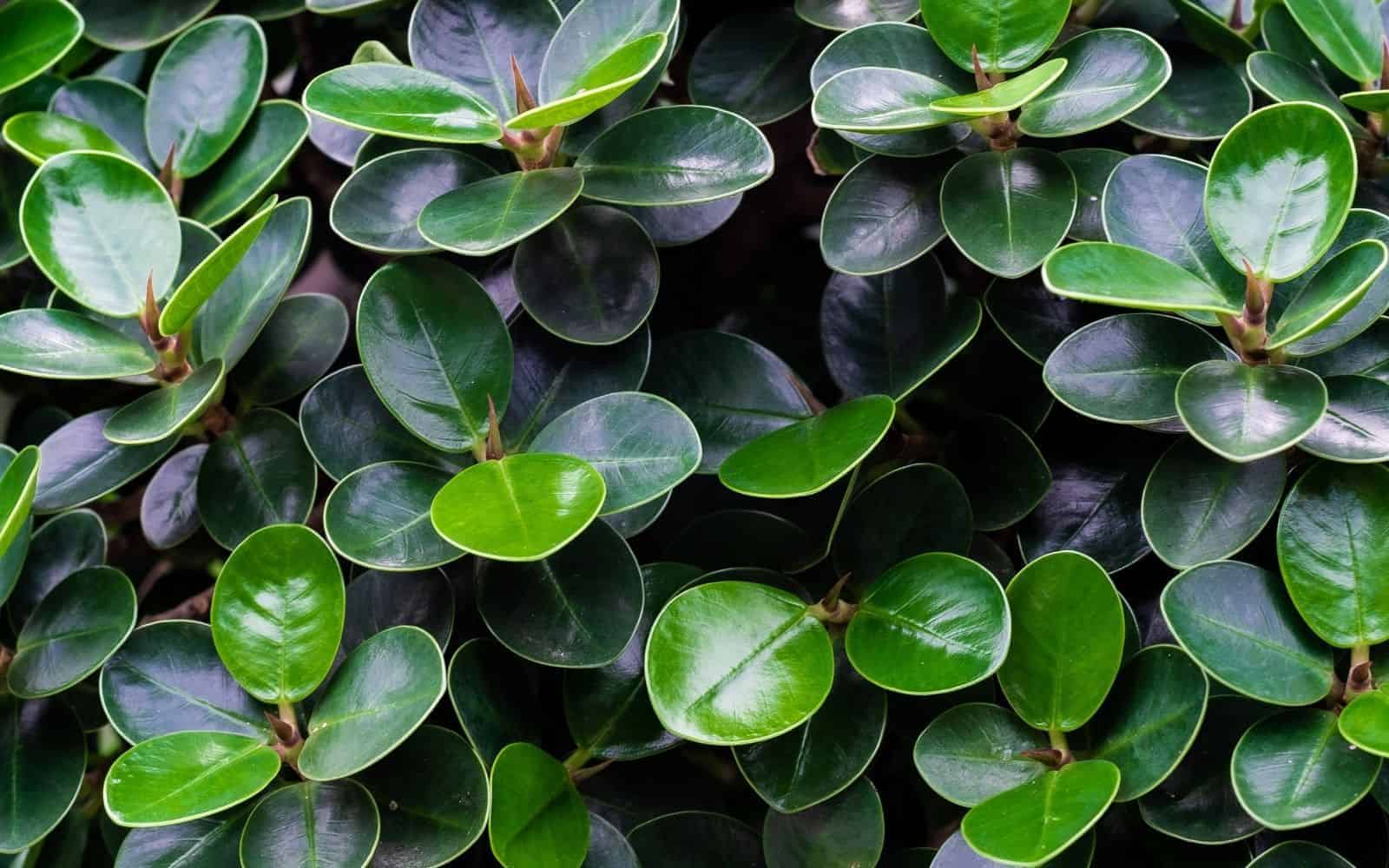
Propagating Peperomia plants
Peperomia plants can be propagated using several methods, including stem cuttings, leaf cuttings, and root division. Stem cuttings are typically the most common method of propagation. Peperomia plants with variegated leaves are generally propagated with stem cuttings or by root division rather than by leaf-petiole cuttings.
Propagating Peperomia stem cuttings
To propagate Peperomia via stem-tip cuttings, use clean sharp scissors to take a ~4″ cutting off the mother plant. Choose a stem that has no flowers or buds. Pull the leaves off the bottom 3/4 of the plant, taking note of where the leaf nodes are located. Once the bottom leaves are gone, use the scissors to snip just below the lowest leaf node. The cutting should now be between 3″-4″ long.
Peperomia cuttings can be propagated in water, potting mix, or rooting plugs. Dip the cut end of the Peperomia cutting into rooting hormone. Gently stick the cutting into the water/potting soil/rooting plug. Water-grown cuttings are quite low-maintenance, but those in potting soil or rooting plugs do better with a little plastic cover to retain humidity.
Use a plastic bag with some ventilation holes poked in it to keep local humidity high until roots start to develop. Remove the bag often to check on the plant, and remove it entirely when the roots start to grow.
Once roots are growing, place the cuttings in bright indirect sunlight or under a plant light. Try not to place them on a windowsill where they will be exposed to direct sunlight or to cold drafts. Keep them warm and cozy (but out of harsh direct sunlight). Re-pot the rooted cutting in the potting mix once the roots are developed enough to start touching the outside of the rooting container.
Propagating Peperomia leaf cuttings
Peperomia plants can be propagated by leaf-petiole cuttings. These cuttings consist of a healthy leaf with a bit of stem attached to them. Leaf cuttings are a good way to multiply Peperomia plants because there is not much stem on these low-growing beauties.
Use clean sharp scissors to trim off a leaf that includes a 1″ long piece of the stem (petiole). Try to make the cut at a 45-degree angle if possible. You can also cut off the top half of the leaf, but this is not strictly necessary.
Dip the cut end into the rooting hormone. Like stem cuttings, leaf-petiole cuttings can then be placed into water, potting mix, or a rooting plug. Leaf cuttings generally don’t need to be covered with a plastic bag like stem cuttings sometimes are. Keep the potting mix/plug well-watered. Move the cutting to a spot with bright indirect light as its roots. Repot after roots develop.
Propagating Peperomia plants by division
Peperomia is an easy plant to divide. Wait until there are multiple stems in the planter pot. Once the Peperomia is becoming crowded and needs repotting, it can generally be divided into 2-3 different plants.
Look at the base of the stems to see where stem groups are emerging from the soil. Pull the plant out of its existing planter to get a better look. Decide which stem groups will be divided off to form new plants. Carefully pull apart the plant (or use a soil knife) to create separate divisions. Re-pot up each Peperomia division into a separate pot with fresh potting mix.
How to repot Peperomia
If you’ve planted your Peperomia well in the first place, you shouldn’t have to re-pot it very often at all. The root systems are small, and as long as it’s in a small enough pot (as one that’s too big will mean the soil takes longer to dry out and this could eventually kill your plant) it should be completely fine. Repotting could also cause your plant to suffer transplant shock, so look out for any symptoms of that if you do choose to re-pot. Wilted leaves or yellowing are both signs of transplant shock.
But it can be a good idea to replant Peperomia every few years to prevent the soil from becoming too compact, or if your plant has outgrown its starter pot. Use a high-quality, well-draining potting mix that contains perlite, coco coir, bark, pumice, or other lightweight ingredients.
Repotting your Peperomia should be infrequent. If the roots have fully wrapped around the sides and base of the pot, then it’s definitely time for a bigger pot. Even then they don’t need much space though, and you should stick with containers that are about 4 inches across.
Some common questions about Peperomia
Is Peperomia toxic to pets? Peperomia is considered non-toxic to most pets. Check the ASPCA poison control pet toxicity database for individual species of Peperomia.
Are there any plant diseases that affect Peperomia? There are a variety of fungal and viral diseases that the Peperomia species is subject to, including ring spots, cutting rot, phytophthora rot, and anthracnose.


